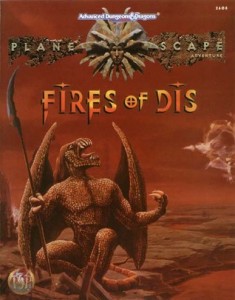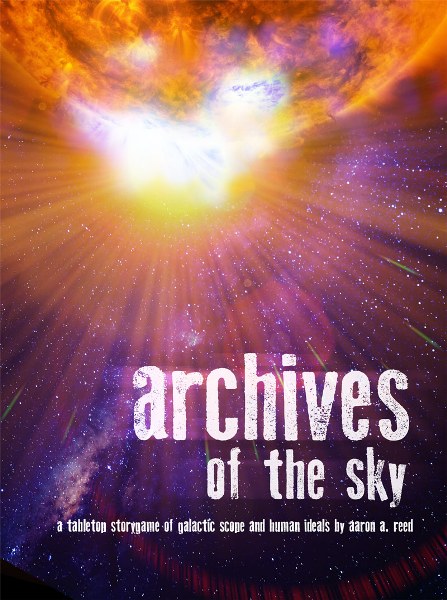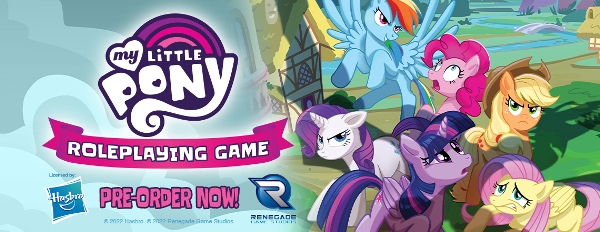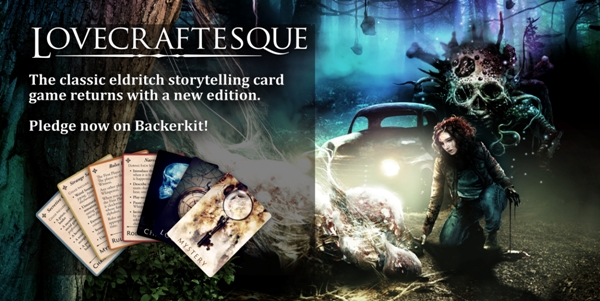The Cool Factor
By The Warden

There are so many variables in a game’s success at the table, assuming details such as mechanics, presentation, camaraderie, and dice rolls are aligned in the perfect global position. For now, I’m talking about the individual session. You can run the same adventure twice and end up with two polar opposite reactions, but there’s always one dead set guaranteed tell in my book. If someone gets so excited during their turn that they commit one of the following actions, I call that game a raving success.
- Shouts out with such enthusiasm that they wake up the dogs;
- Stands up from a seated position when they defeat an enemy/challenge with that final dice roll;
- Slams their fist on the table and proceeds to tell me (in good fun) that I can suck on it;
- Exclaims any expression with such vigour that no one understands what they just said;
- Spits on the map while performing any of the above actions.
(I’m afraid that last one happened many, many years ago in another GM’s game. While that level of excitement has become the stuff of legends in my personal circle, it did lead to the player being banished from future games. In the GM’s defence, it was a Ravenloft map and now it’s permanently stained with a wad of Cheetos-hued phlegm.)
These aren’t just crucial measurements in casual gaming, but playtesting as well. Some factors are beyond explanation and verbiage; they can only be expressed with sheer emotion. It’s not until a player gets this excited during play or playtesting that I consider the session to be a success at any degree. It’s something I call the “cool factor,” because the player has experienced a moment so invigorating, it causes them to hoot and holler almost uncontrollably. All social maintenance and manners dive right out the window and the roleplayer merges with the sports nut who just watched his team’s defensive line intercept the pass and take it all the way to their opponent’s end zone.
A DESIRE TO RECREATE
Everyone designs their games with a biased viewpoint, particularly when it comes to style and visualization. By that, I mean every writer has certain influences and impressions of specific genres, individual artists (such as a particular movie director), or exact titles (such as a movie or book). When anyone creates any piece of work, they are aiming to invoke an emotion similar to the one they experienced when they first encountered their definitive genre, artist, or title. Something they experienced as a reader or a viewer that made them stop and say… “Cool.”
Game designers take that same approach by drawing on their experiences as a player or as a Gamemaster. We seek to design a setting, adventure, or monster compendium capable of coming even within range of the awesome sauce of classic games of yesteryear. For me, it’s the AD&D Planescape adventure, Fires of Dis, by Steve Perrin and Ray Vallese. Those crafty buggers taught me it was possible – and plausible – for a GM to twist and trick the players into following along with your storyline. So many sessions of high hopes, planning, and expectation were created in my early days, only to see them dashed by the players’ inevitable ability to break the plot with that one unforeseen loophole. As a traditional GM, your role (in the eyes of the players) is as the master of obstacles. Sure, you’re supposed to help them out and make sure they have access to everything they need to play the game properly, maybe even ensure they don’t stumble too far behind. You’re also the dice roller for every enemy they encounter. Their job is to thwart the enemy; it’s their duty to break your plot. Fires of Dis taught me to pit their confidence against them and make them think they were sticking it to the villain all along.
When I write something, I want the GM to experience that same revelation and satisfaction as I discovered in that adventure. It’s why I’m a big fan of giving Gamemasters opportunity to play the game in their own secret way rather than simply follow through with the events in motion. To have a moment of righteous satisfaction when they know the players are doing exactly what they need to do and don’t even realize it.
FILLING A VOID
Absence can be a source of inspiration as well, when you think about it. Sometimes made in spite of a pitiful movie that was not what the new Star Wars was supposed to be about, but most ingenious designs stem from a desire to see something that doesn’t exist in modern games. Cool factors can be chosen for the sole reason that you’ve simply never seen it in a game before.
I don’t play very often any more, but my youth was a non-stop frenzy of game play. The thing is I’m not a good player. I’ve attempted some pretty dumb moves in my day and ended up sacrificing many a character in the process. Sometimes even willingly thrown them into the line of fire and kill them out of boredom and bad expectations. Why? Probably because how my character acts in my head never matches what’s on the table. I like high octane, poetic action sequences and that’s how I picture combat scenes in my head. People are flipping in slow motion and everyone seems to know how to deliver a spinning overhead kick. In my younger days (and still today, to some degree), I failed to appreciate games for what they were trying to present and instead wished games were more like how I pictured them in my head. Therefore, my designs are made in the hopes of giving players that heightened sense of excitement when they can perform otherwise impossible feats of strength and dexterity.
SETTING YOUR COOL FACTOR
Every game has its own central point; a perfect spot in game play where its running like a race car around the track and nothing can stop it. What I’ve often wondered about is whether or not it’s possible to set a cool factor for both GMs and players in the same game? Perhaps not at the exact same moment, but within the same game. My own personal journeys have typically gone one way or the other, but they do seem to have split themselves into two directions: I write adventures for the GM’s cool factor and design systems for players. Strange, right? It’s something I’ve just started to realize myself and it’s giving me a lot of thought about future designs.
Wherever you aim to centre your design’s cool factor, it has to be experienced in playtesting. That’s when you know the game is hitting its mark. If it never hits the cool factor during playtesting, there’s no way you can be certain it will happen all by itself out in the world beyond your reach. Or it’s at least when you know there’s no more tweaking required. You still have a lot work ahead of you at that point, but this is the moment where all the work that’s come before has been worth it.
The thing about cool factors is that we may not be consciously aware of it during the initial design process, but its central in our minds when we describe it to others and envision the end result at our desks. Knowing the kind of experience you want players to have shapes every aspect of your game. If you want to make a challenging, hardcore game of bloody mayhem, it’s not likely you’ll come up with cute and catchy names for traits and players won’t earn Friendship Points at the end of the night. You’ll want the game to be deadly and will design a way to either ramp up the damage output or reduce character health. Or both. When players discover they’re at a serious risk of getting killed and need to figure a way out of this situation with a little uncertainty in their voice, you’ll know you’ve hit your game’s cool factor.
It’s intuitive and can only be measured by moments you experience first hand. You know it when you see it. Getting there is the fun part of the journey.



